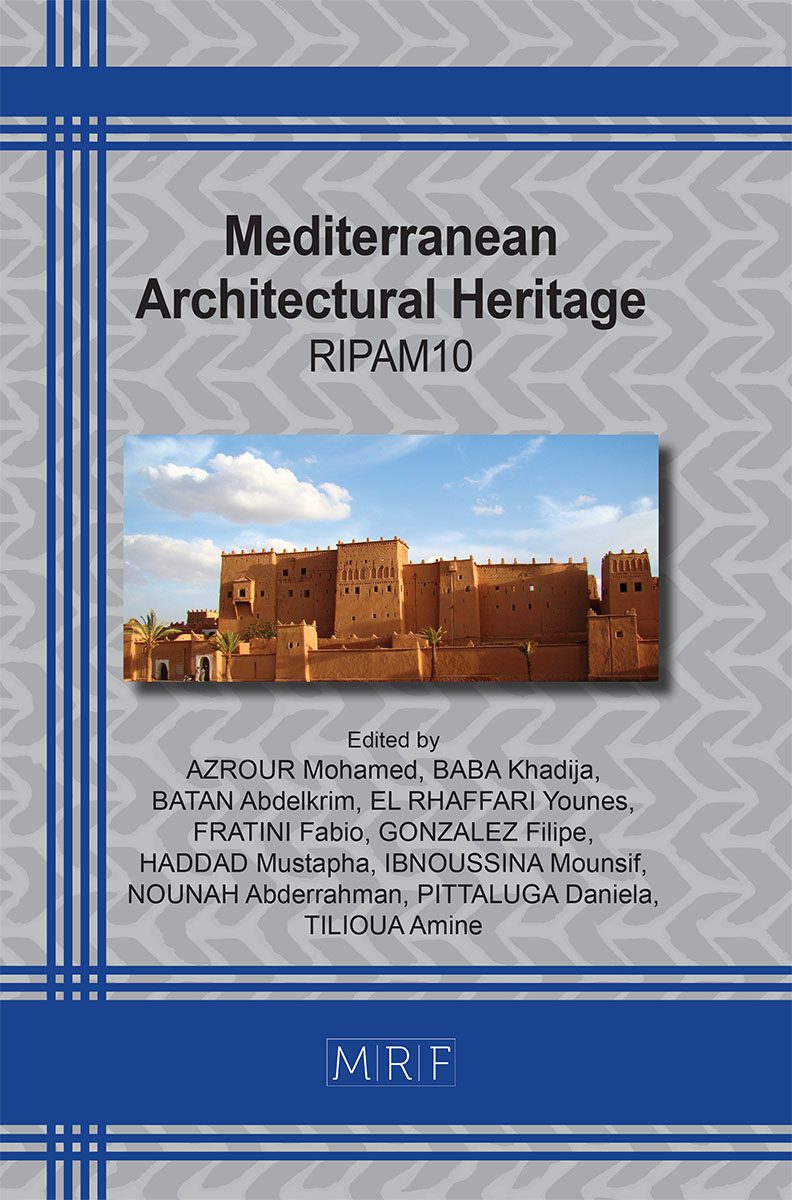Evaluating the Influence of Shale Extracted from the Settat Khouribga Region on the Characteristics of Concrete
Ayoub SOUILEH, Latifa OUADIF, Driss EL HACHMI, Mohammed CHRACHMY
download PDFAbstract. The incorporation of indigenous materials in the production of reinforced concrete offers a twofold prospect: the potential reduction of construction costs and environmental impact, along with the stimulation of economic growth in the source regions. To maximize the utility of shale derived from the Settat-Khouribga area and assess its influence on concrete properties, a series of tests were conducted on the material. Samples underwent meticulous characterization, encompassing mineralogical composition, particle size distribution, and mechanical properties. A comprehensive set of assessments was applied to the concrete samples, including tests for compressive strength, flexural strength, water absorption, porosity, and resistance to reinforcement corrosion over an extended timeframe. Concrete samples containing clay shale demonstrated compressive and flexural strength comparable to or even surpassing that of conventional concrete samples. Additionally, the incorporation of clay shale led to a reduction in porosity and water absorption in concrete, indicating an enhancement in durability.
Keywords
Local Materials, Reinforced Concrete, Clay Shale, Durability, Mechanical Resistance
Published online 3/15/2024, 8 pages
Copyright © 2024 by the author(s)
Published under license by Materials Research Forum LLC., Millersville PA, USA
Citation: Ayoub SOUILEH, Latifa OUADIF, Driss EL HACHMI, Mohammed CHRACHMY, Evaluating the Influence of Shale Extracted from the Settat Khouribga Region on the Characteristics of Concrete, Materials Research Proceedings, Vol. 40, pp 240-247, 2024
DOI: https://doi.org/10.21741/9781644903117-26
The article was published as article 26 of the book Mediterranean Architectural Heritage
![]() Content from this work may be used under the terms of the Creative Commons Attribution 3.0 license. Any further distribution of this work must maintain attribution to the author(s) and the title of the work, journal citation and DOI.
Content from this work may be used under the terms of the Creative Commons Attribution 3.0 license. Any further distribution of this work must maintain attribution to the author(s) and the title of the work, journal citation and DOI.
References
[1] , M. VIEIRA, &, A. GONCALVES (2000). Durability of high performance lightweight aggregate concrete. In Second international symposium on structural lightweight aggregate concrete (Kristiansand, 18-22 June 2000) (pp. 767-773.
[2] C Arambourg, J Signeux. & F.M. Bergonioux 1952. Les vertébrés fossiles des phosphates de l’Afrique du Nord. Notes et Mémoires du Service. Géologique du Maroc, 92, 396 p.
[3] N. El Yakoubi 2006. Potentialités d’utilisation des argiles marocaines dans l’industrie céramique : cas des gisements de Jbel Kharrou et de Ben Ahmed (Meseta marocaine occidentale). Thèse de Doctorat ès-sciences, Université Mohamed V, Rabat, 212 p. https://doi.org/10.1016/j.crte.2006.03.017
[4] NM 00.1.004 Tamisage – Analyse granulométrique par tamisage.
[5] NM 10.1.005 Liants hydrauliques – Techniques des essais.
[6] X. Zheng, & B. Zhang (2005). Effect of pre-wetted shale ceramsite on strength and frost-resistance of lightweight aggregate concrete. JOURNAL-CHINESE CERAMIC SOCIETY, 33(6), 758.
[7] E. L El Houssine , A. MRIDEKH, , B. EL MANSOURI, , M. TAMMAL, &, M EL BOUHADDIOUI. (2014). Apport des données géophysiques et géologiques à la mise en évidence de nouveaux éléments structuraux associés à la flexure de Settat (Maroc central) Contribution of geophysical and geological data for the identification of new structural elements related to the Settat flexure (central Morocco). Bulletin de l’Institut Scientifique, Rabat, (36), 109-121.
[8] G Beaudet. 1969. Le plateau central marocain et ses bordures, étude géomorphologique (bordure sud-ouest et sud du plateau central). Thèse de Doctorat Lettres, Université Mohammed V, Rabat, 478 p.
[9] NM 10.1.707 Essais pour déterminer les caractéristiques mécaniques et physiques des granulats – Méthode pour la détermination de la masse volumique en vrac et de la porosité intergranulaire.
[10] NM 10.1.004 Liants hydrauliques – Ciments – Composition, spécifications et critères de conformité.
[11] H Li., B Lai., &, S. Lin (2016). Shale mechanical properties influence factors overview and experimental investigation on water content effects. Journal of Sustainable Energy Engineering, 3(4), 275-298. https://doi.org/10.7569/JSEE.2016.629501
[12] NM 15.2.001 Instruments de pesage à fonctionnement non automatique Partie 1 : Exigences métrologiques et techniques – Essais.”
[13] A. Cousture Agniel (2023). Étude de l’activation alcaline des composés calcaires et siliceux pour la formulation de nouveaux matériaux de construction à faible impact environnemental (Doctoral dissertation, CY Cergy Paris Université).
[14] X. G. Zhang, , X. M Kuang, J. H. Yang, &, S. R. Wang (2017). Experimental study on mechanical properties of lightweight concrete with shale aggregate replaced partially by nature sand. Electronic Journal of Structural Engineering, 17, 85-94. https://doi.org/10.56748/ejse.17222
[15] A. A. HAMMAMID AMMAR (2023). Identification des caractéristiques physiques, mécaniques et minéralogiques des matériaux carbonatés destiné aux travaux de BTPH, cas des carrières d’agrégats de la région d’ibn badais, wilaya de Constantine (Doctoral dissertation, faculté des sciences et de la technologie* univ bba).
[16] NM 10.1.051 Essai pour béton durci – Résistance à la compression des éprouvettes.
[17] NM 10.1.068 Essai pour béton durci – Confection et conservation des éprouvettes pour essais de résistance.
[18] NM 10.1.072 Essai pour béton durci – Masse volumique du béton.
[19] NM 10.1.052 Essai pour béton durci – Résistance en traction par fendage d’éprouvettes.
[20] M TAZIR. (2023). tude comparative des normes régissant la production du béton prêt à l’emploi dans les 3 pays maghrébins.
[21] J. K. Norvell, , J. G. Stewart, , M. C Juenger., & Fowler, D. W. (2007). Influence of clays and clay-sized particles on concrete performance. Journal of materials in civil engineering, 19(12), 1053-1059. https://doi.org/10.1061/(ASCE)0899-1561(2007)19:12(1053)































